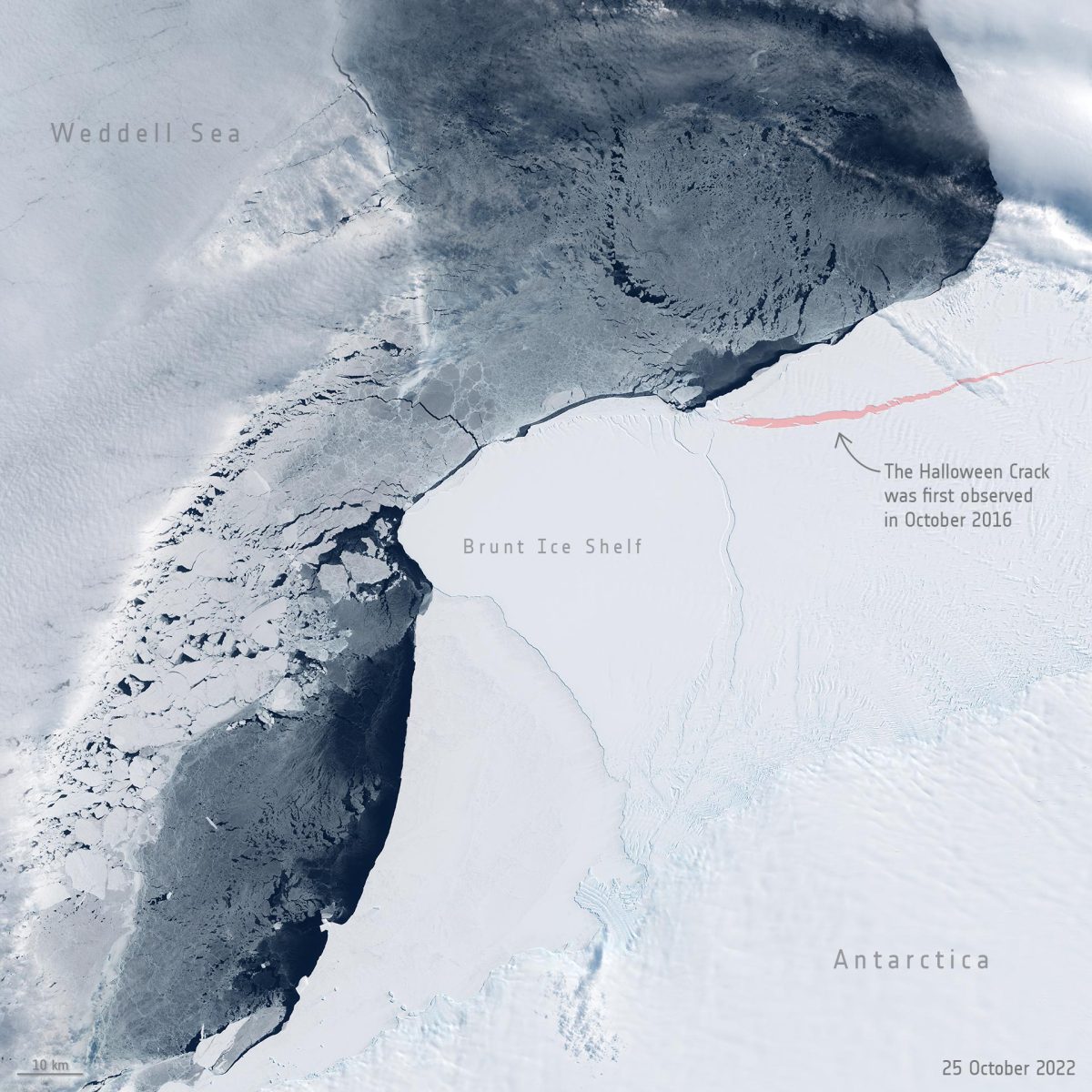Copernicus Sentinel-2 image of the Halloween Crack in Antarctica. The image was captured on October 25, 2022. Credit: Contains modified Copernicus Sentinel data (2022), processed by ESA, CC BY-SA 3.0 IGO
In celebration of Halloween, the European Space Agency (ESA) brings you this recent Copernicus Sentinel-2 satellite image of the Halloween Crack in Antarctica.
First spotted on October 31, 2016, the Halloween Crack runs from an area of Antarctica known as McDonald Ice Rumples – which is where the underside of the floating ice sheet is grounded on the shallow seabed. This pinning point slows the flow of ice and fractures the ice surface.
The Halloween Crack, which is currently stable, runs adjacent to the more precarious tip of the Brunt Ice Shelf. This tip of the shelf is hanging by a thread – it is now only held in place by a narrow strip of ice around 600 meters (2000 feet) long at the northern end of the long chasm cutting through the western and remaining eastern part of the ice shelf.

Using radar images from the Copernicus Sentinel-1 mission, this animation shows the evolution of two ice fractures from September 2016 until mid-October 2019. The large chasm running northwards is called Chasm 1, while the split extending eastwards is referred to as the Halloween Crack. Credit: Contains modified Copernicus Sentinel data (2016-19), processed by ESA, CC BY-SA 3.0 IGO
If and when this potential rupture point finally gives way, it is expected to spawn a huge iceberg of around 1750 square kilometers (675 square miles). For a size comparison, this is around two-thirds the size of the state of Rhode Island or over five times bigger than the size of Malta.
Because Ice shelves float, when they calve icebergs the bergs do not actually add to sea-level rise. However, ice shelves act as a brake on how fast the glaciers on the land flow to the sea. Antarctica’s ice shelves are weakening due to climate change, leading to greater risks of more land ice ending up in the oceans. This would thereby add to sea-level rise, which is something arguably more frightening than Halloween.
In this episode of the Earth From Space program, the Copernicus Sentinel-1 mission takes us over cracks in the Brunt ice shelf, which lies in the Weddell Sea sector of Antarctica.
Routine monitoring by satellites with different observing capabilities offers unprecedented views of events happening in remote regions like Antarctica, and how ice shelves are coping in response to changes in ice dynamics, air, and ocean temperatures.
Share your story or advertise with us: Whatsapp: +2347068606071 Email: info@newspotng.com

















